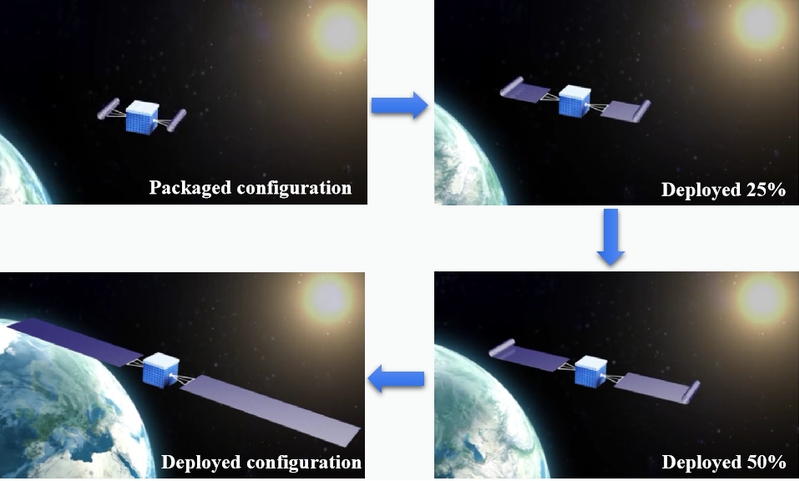Fengfeng Li, Liwu Liu, Xin Lan, Chengtong Pan, Yanju Liu, Jinsong Leng, Qiong Xie
Smart Materials and Structures, 2019.
DOI: https://doi.org/10.1088/1361-665X/ab18b7
A sunlight-stimulated substrate, named Mission SMS-I, was carried out the orbital deployment experiment and anti-irradiation verification on an experimental geostationary satellite. It is the prototype of a solar array substrate which integrates the conventional substrate, support structure, and deployment function by using the carbon fabric reinforced shape memory polymer composite (SMPC). The substrate could deploy from the “Ω” packaged configuration to the “-” deployed configuration once its temperature is at or above the glass transition temperature. This paper presents details of the Mission SMS-I in a sequence of material preparation, structure design, manufacture, ground experiments, and orbital experiment. Results show that the Mission SMS-I can withstand the required mechanical and thermal conditions, successfully deploy in orbit and have a good long-term anti-irradiation capability. SMPC is a suitable choice for the substrate of solar arrays or any other deployable structures which need the actuation in material-level or directly exposed to the space environment.
